-
Car Reviews
- All reviews
- Midsize SUVs
- Small cars
- Utes
- Small SUVs
- Large SUVs
- Large cars
- Sports SUVs
- Sports cars
- Vans
Latest reviews
- Car News
-
Car Comparisons
Latest comparisons
- Chasing Deals
It’s named after a desert – so how will the Mahindra Thar 4×4 handle a highly technical off-road track in the middle of a torrential Indian downpour? We put it to the test!
The clouds are forming over Chennai in southern India. A storm cell is fast approaching. And this is what I call: ‘Thar weather’.
I’m one of a small contingent of Australian media given exclusive access to Mahindra’s 45-acre SUV Proving Track about two hours out of Chennai. We’ve made it through a long day of driving on and off the tarmac, putting Mahindra’s XUV700 midsize SUV and Scorpio large SUV through their paces in situations that they’d probably never find themselves in in Australia.
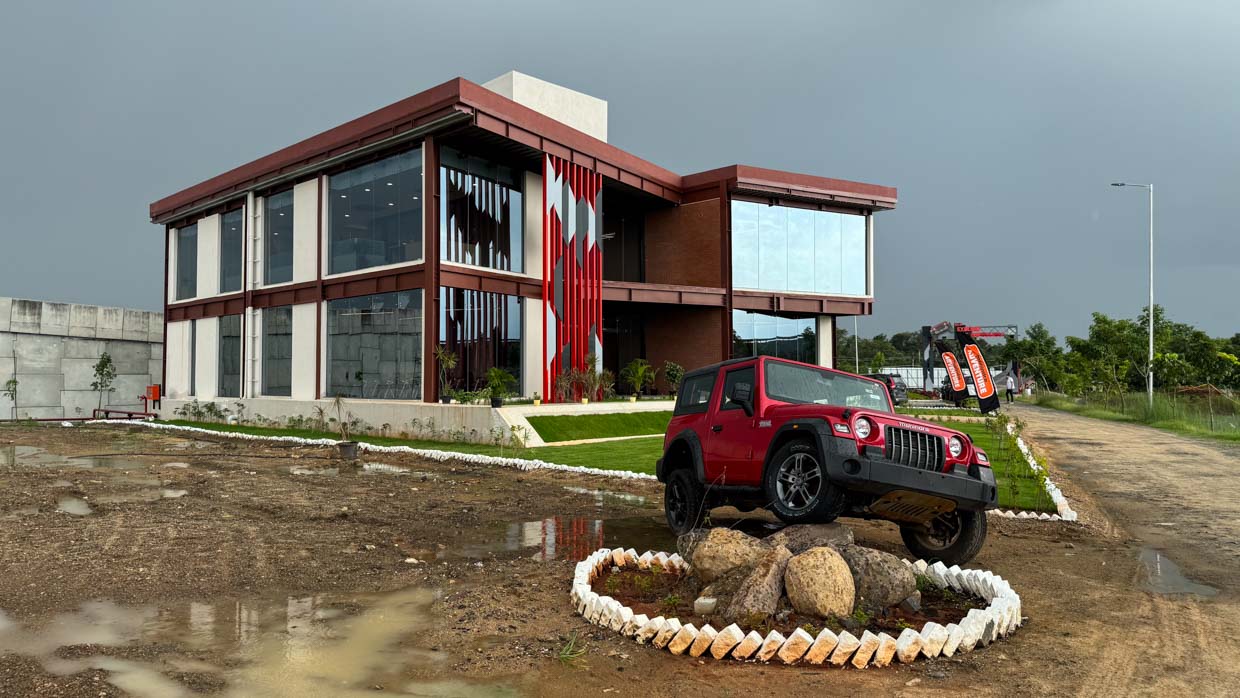
Hot, sweaty, tired, and with the clock ticking away, it’s time to start wrapping up for the day before an hour journey through the outskirts of Chennai to our hotel, followed by another hour of driving through Tetris-like traffic to the airport before our flights back to Australia that very evening.
I prepare myself mentally. Driving in India where rules are more like guidelines, and where conditions demand utmost awareness and assertiveness at all times, is an experience unlike Australia. But apart from the seismic differences in driving culture, drivers in India also need to cope with stray animals loitering the streets, terrible road surfaces, potholes, and extreme weather conditions.
It’s within that context that Mahindra has made a name for itself domestically building rugged, do-anything SUVs that can navigate tough conditions with capability and affordability. And it’s also one of the reasons that there is so much love in the country for one particular model in the brand’s lineup.
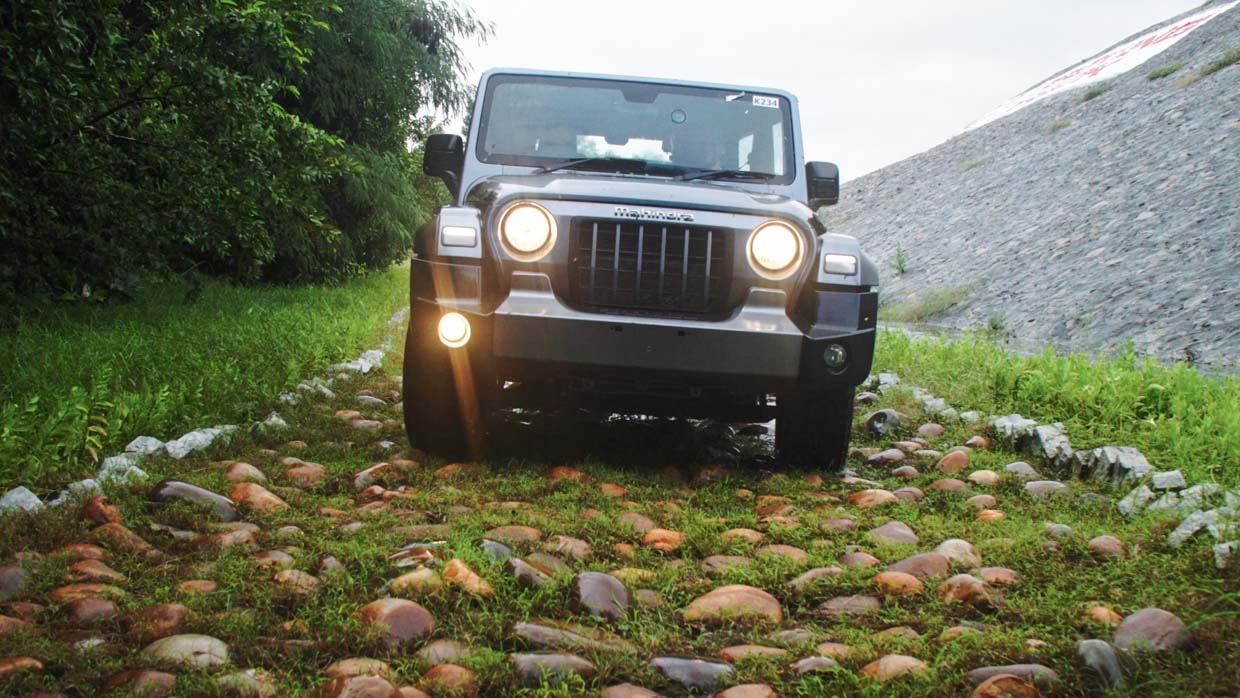
Materialising almost simultaneously with the crackle of thunder and lightning in the dark grey skies above us, an opportunity opens up with the heavens: a drive in that very vehicle, the Mahindra Thar. Off-road. In torrential rain.
We’ll be taking it through Mahindra’s highly technical, obstacle-filled 4WD test track, which I’m told by one of the instructors has recently been through some even nastier weather resulting in water crossings aplenty.
It was time to see what the Thar – and Mahindra – is made of. I stepped into the rain for my whirlwind half hour of slippery stone ascents, water crossings, and articulation challenges. Bring it on.
As the Mahindra four-wheel-drive instructors prepared our fleet of five Thars, I took a moment on my phone just out of the full pelt of the rain to test my knowledge of the Thar, which isn’t available in Australia… although, spoiler alert: I wish it was.
While Mahindra has a long history of rugged off-roaders in India, the new Thar has perhaps the most storied history of its lineup.
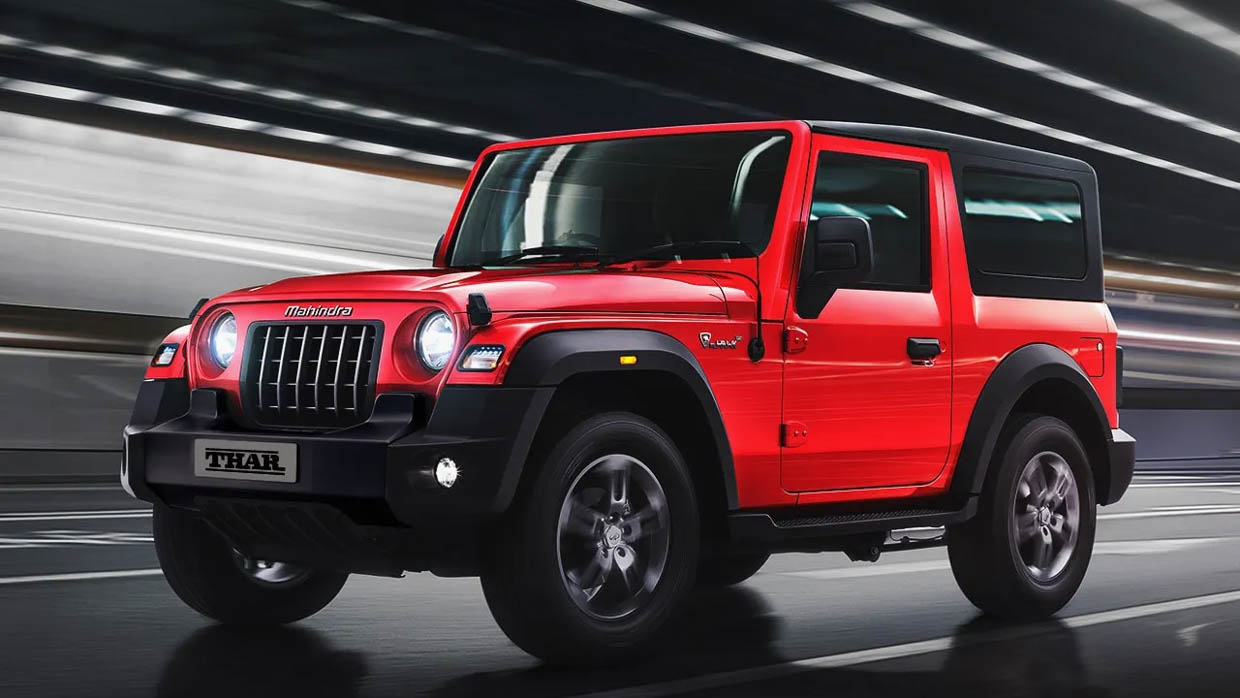
The nameplate made its debut in 2010, taking its name from the Thar Desert, also known as the Great Indian Desert, which spans both India and Pakistan. An arid desert landscape reference is an appropriate name for the rugged off-roader, though it’s also a juxtaposition to the rain we were experiencing – but that duality speaks to the extremities that this vehicle was born out of.
These are extremities that would also make it directly relevant to Australian conditions.
While the nameplate debuted this century, the vehicle’s roots date back much further. And that’s where we need to acknowledge something else India is famous for – its elephants. There’s a sizable one in the room, or on the track so to speak, and that’s that you don’t need to squint too hard to see certain visual similarities with another well-known off-roader.
Those similarities and a related court case have prevented the Thar from being made available in Australia, although it’s worth noting that the likeness hasn’t eventuated out of nowhere.
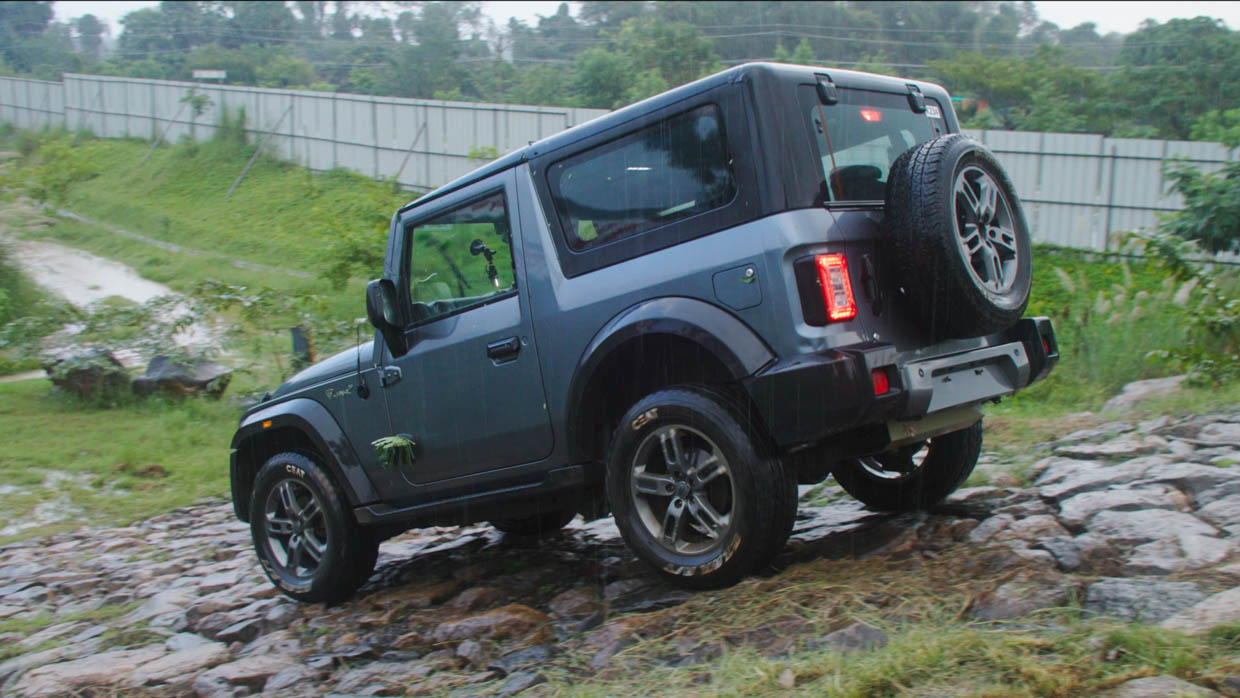
Mahindra began producing vehicles in India in the 1940s when it was granted the rights to build the original Willys Jeep domestically in 1949. Over the years that would evolve into vehicles such as the Mahindra MM540 in the ’80s, the Mahindra Classic in the ’90s, the Mahindra Legend in the 2000s, and now the Thar.
The vehicle has cemented its position as a key part of the brand’s homeland lineup over these decades and Mahindra tells us that supply is struggling to keep up with demand domestically – with wait times apparently blowing out years in their worst cases.
As for Australia, it’s understood that Mahindra could apply to bring the Thar to our market if there was a sufficient redesign…and if a certain other automaker granted approval beforehand. However, Mahindra has told us that the Thar will unequivocally not be coming down under.
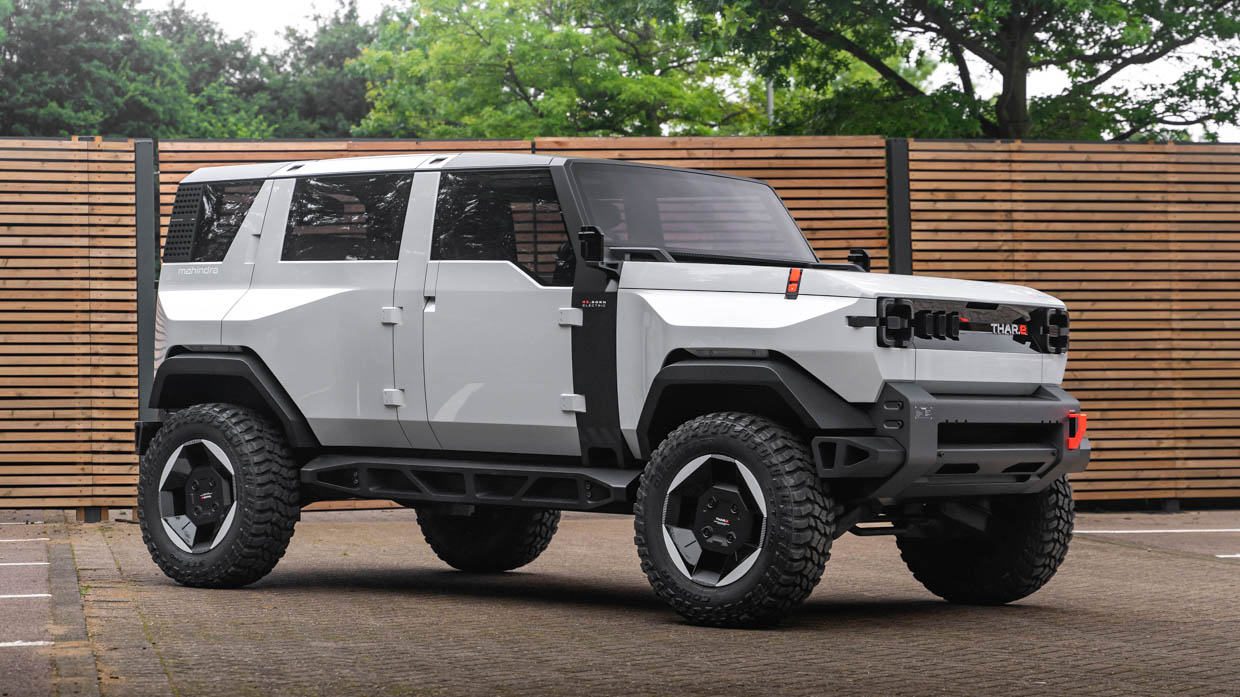
Pictured: the all-electric Thar-e concept
Nevertheless, this is an excellent opportunity to gain an insight into the essence of what the brand is capable of, and what we might be able to expect from future products – especially given an electric Thar-e is in the pipeline, and that could make its way to Aussie shores.
So today we’ll be driving the current second-generation Thar, launched in 2020 to celebrate the brand’s 75th anniversary.
The rain didn’t seem to be easing, but all the journalists commandeered a vehicle. I was allocated a Thar coloured in ‘red rage’, hopefully not foreshadowing anything that might occur on the track…
As we get ready to hop inside, a few of us on the drive make some comments around the value proposition. While the Jeep Wrangler will set you back in excess of $80,000 in Australia, the pricing for the Mahindra is at the other end of the scale, in India at least.
There are 11 variants available in the Thar’s home country, which range in price from just under $20,000 and peak at just over $30,000 based on our conversion from Indian rupees to Australian dollars. So it seems a bit of a bargain!

As for other competitors aside from the Wrangler, think Suzuki Jimny (starts at $30,490 before on road costs), perhaps also the GWM Tank 300 (starts at $46,990 before on road costs).
In terms of dimensions, the three-door Thar measures 3985mm in length, 1820mm in width and between 1844 and 1855mm in height depending on variant – that’s exactly the same length as the new Suzuki Jimny XL five-door we recently reviewed.
And while the Thar is only available as a three-door, a five-door is also on its way in India.
Three powertrains are available including an 2.0-litre petrol engine delivering 112kW and 300Nm, a 1.5-litre turbo-diesel making for 87kW of power and 300Nm of torque, and finally, the engine our vehicle is equipped with, a detuned version of the 2.2-litre turbo-diesel used in the Scorpio which makes for 97kW or power and 300Nm of torque in the Thar.
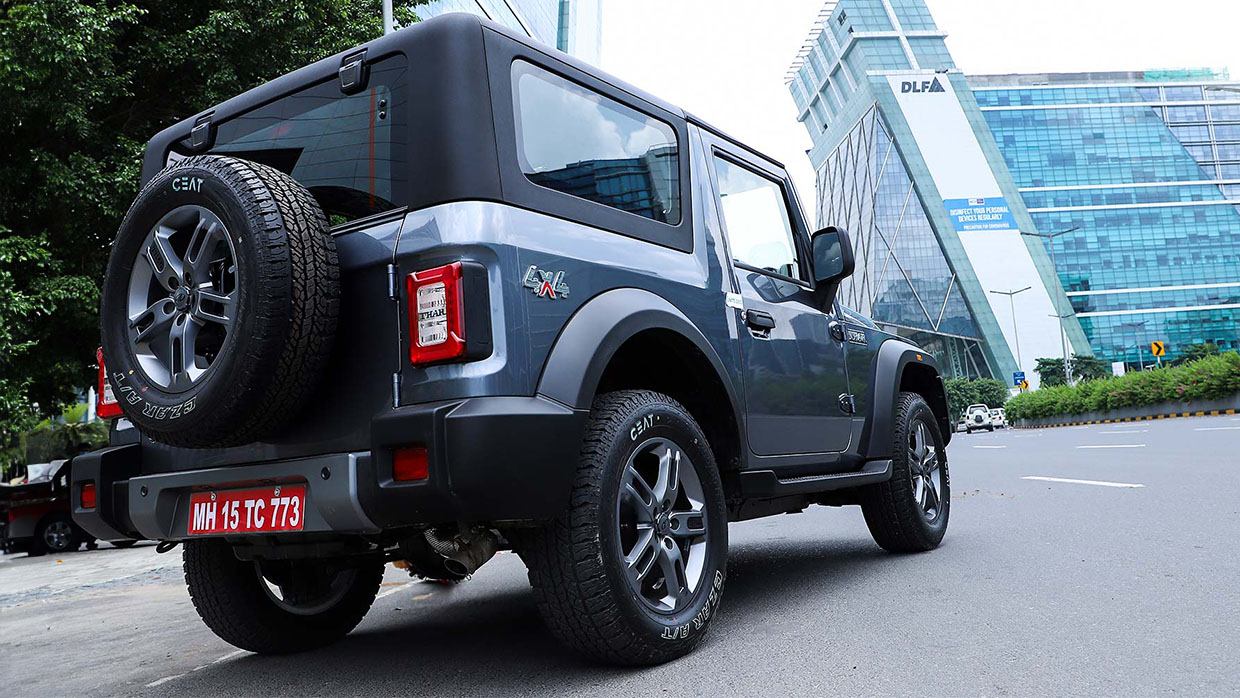
In terms of transmission, our vehicle was equipped with a six-speed manual transmission although an automatic is also available.
The ladder-frame chassis off-roader also comes with a part-time four-wheel drive system with dual-range gearing, independent double-wishbone front suspension and a multi-link solid rear axle suspension layout, plus a locking rear differential.
It boasts a ground clearance of 226mm, wading depth of 650mm and very solid approach (41.2 degrees), departure (36 degrees) and rampover (26.2 degrees) angles, all of which will all hopefully come in handy very shortly.
As we hop inside our allocated vehicles, it’s made clear to us that the vehicles we are driving are some of the last pre-production prototypes used during the extension validation phase for the vehicle and are now being used exclusively as a runabout at Mahindra’s proving track.
As such, we’re reminded we are not driving final production versions, which had a few changes made from our prototypes including to rectify a leaking roof – eep, it’s not like it’s pelting down…?
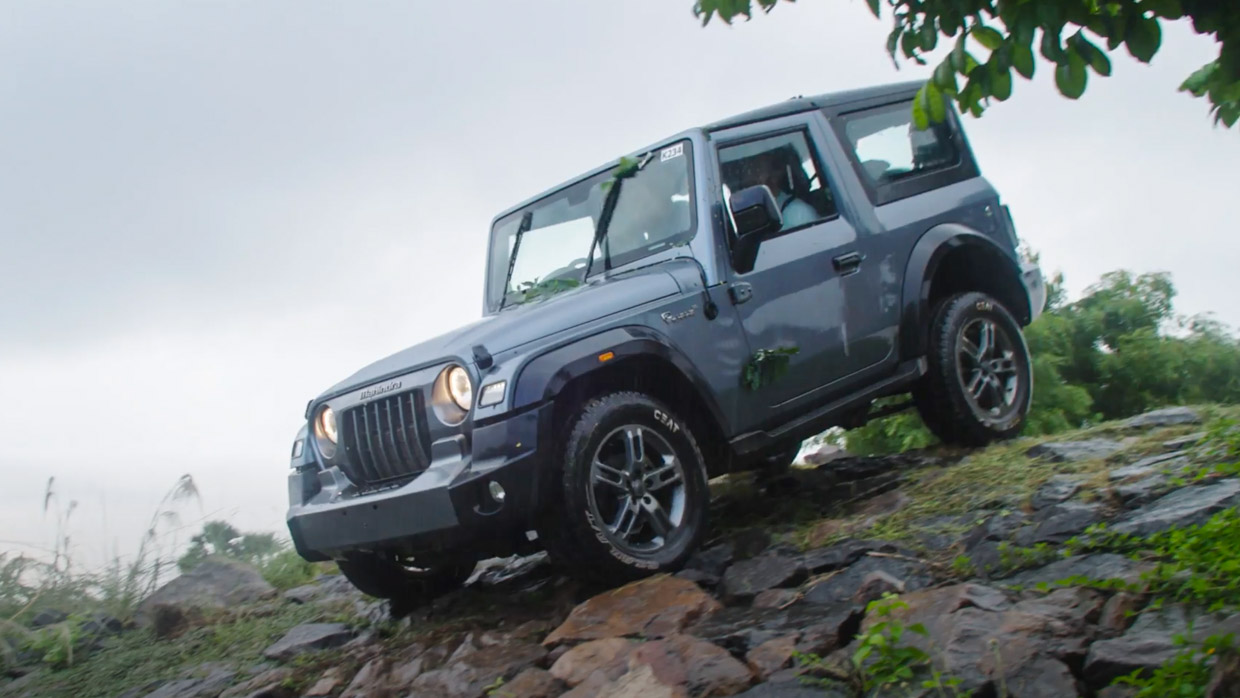
I buckle up and switch it on to hear the diesel burble into life before taking a few minutes to wait for the green light to proceed into the track. This gives me and my two passengers enough time to get comfortable in the four-seat Thar and we’re lucky: no leaky roof in the ‘red rage’ Thar.
Mahindra’s purpose-built SUV proving track provides an off-road course that isn’t for the faint of heart, with over 30 obstacles designed to challenge both driver and car. While the challenges are designed to test vehicles in the extreme, the track also speaks to the challenging Indian conditions that the vehicles need to be made equipped for. The vehicles need to earn their stripes somewhere!
We make our way through the entrance and so far so good – the manual transmission is easy to use, and easy to keep in first gear, which realistically I’ll be using most of the time.
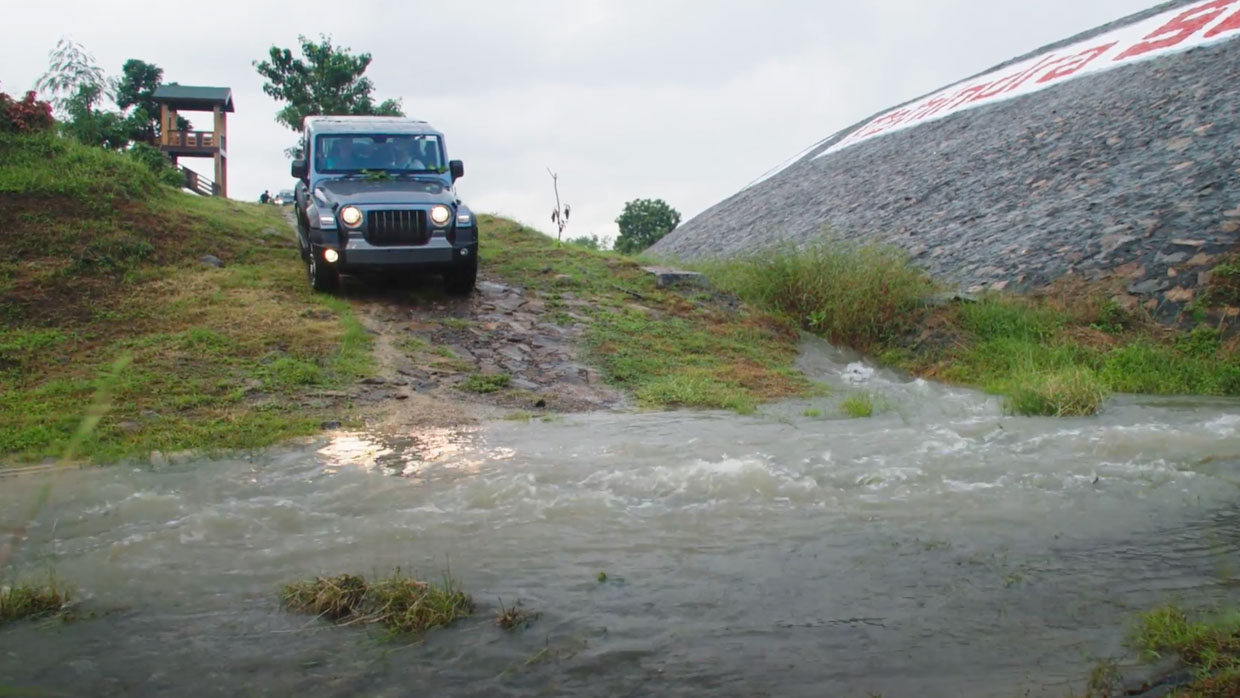
The track is easy at first as the procession of Thars navigate the windy, muddy road, with leaves and branches poking and sliding against either side of our cars. And then, the first of many obstacles.
Approaching a water crossing of unknown depth on a technical four-wheel drive track that I’m unfamiliar with, I slow down on approach and turn to my Mahindra representative with a question: “is there anything I need to be conscious of here?”
“No, just go through”, he responds casually.
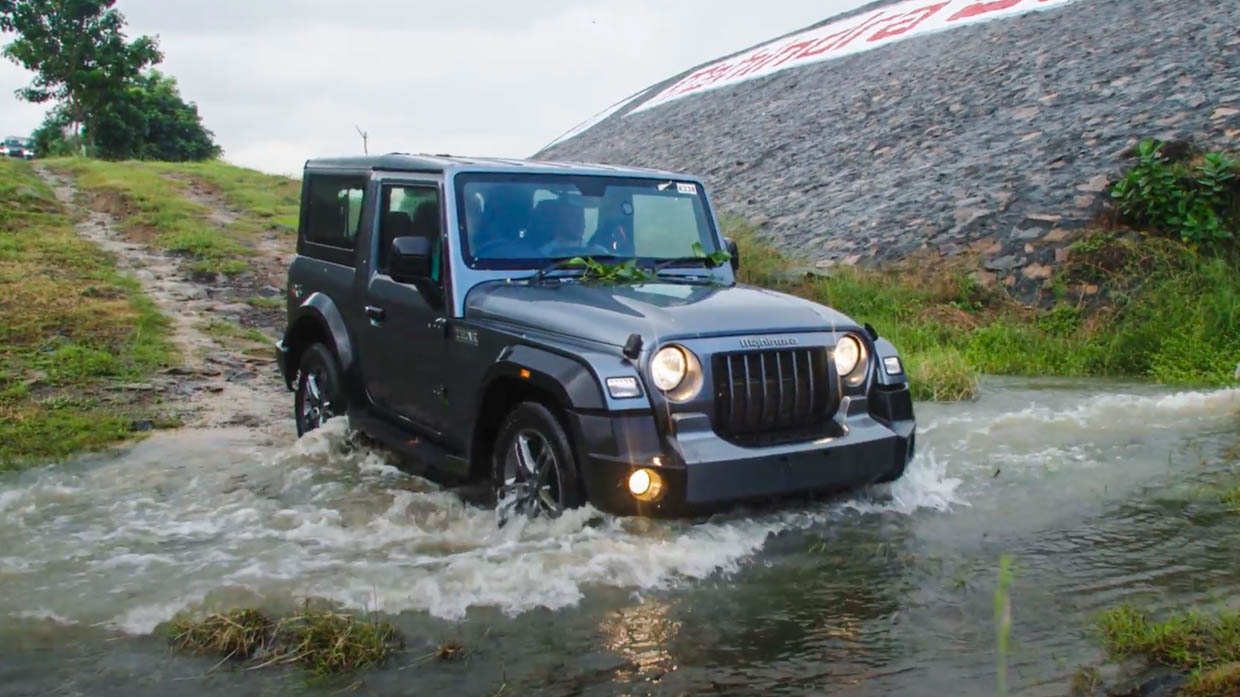
Alrighty then. I make my way through the crossing, the splashing water below us blending in with the rain splattering above us.
We emerge on the other side without issue and then approach the articulation twister, a short and sharp series of criss-crossing gradients designed to test the suspension. The Thar takes these on with relative ease. I can see that my passengers are clinging on as we bounce through, though the seats seem to provide a good level of support for that kind of situation.
The Thar is also an equal match for the next challenge as we navigate both a steep stone ascent and descent of around 40 degrees.

Halfway up, we have to stop on the slippery stones – a fellow journalist in the Thar in front waves his hands. He wants to get that prized shot re-filming his ascent and needs us to reverse all the way back down so he can. I throw the stick in reverse, let out the clutch and begin to creep backwards.
I manage to back the Thar down slowly, with confidence, aided by the solid visibility from the boxy design, with the vehicle’s four-wheel-drive system maintaining good traction in the wet on the slippery, steep gradient.
Navigating the next challenge is perhaps slightly more difficult: the steps, which my instructor reminds me to approach one by one, with a short pause in between each.
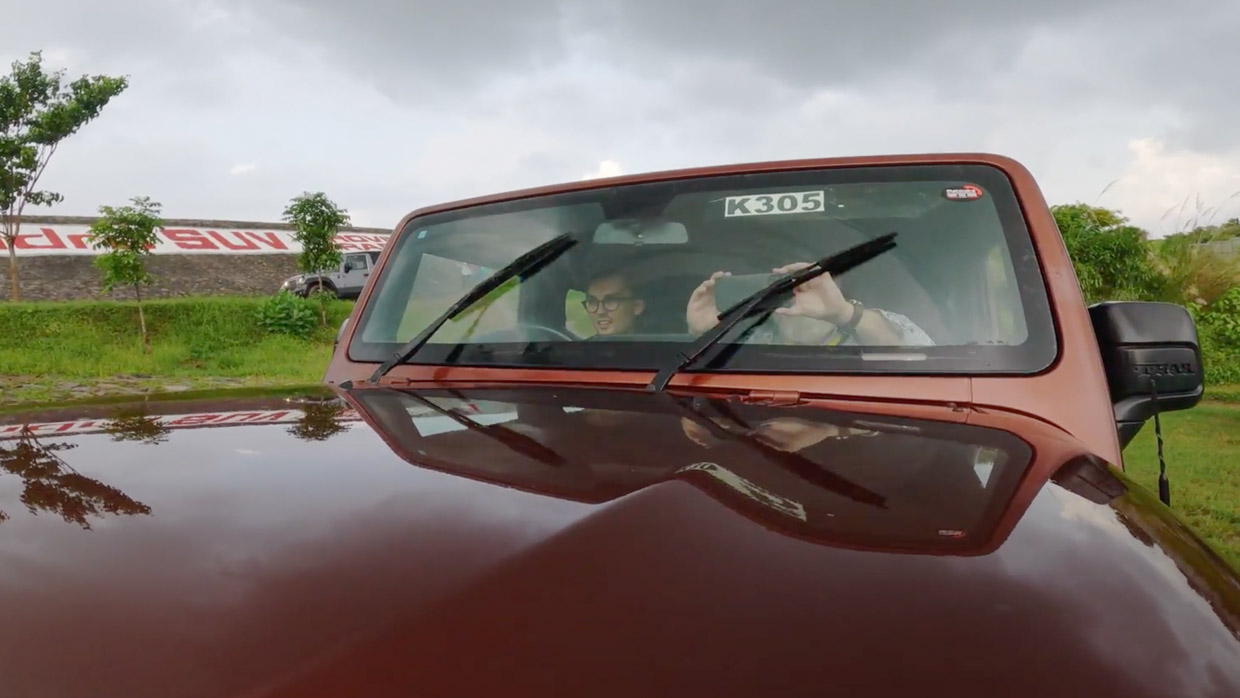
This requires even more careful modulation of the brake pedal in comparison to a smooth descent where I’d be able to hold a continuous pace. In contrast, this proves slightly more challenging to avoid slipping down two steps at once.
With a tight deadline for an international flight adding to the adrenaline flow, perhaps that isn’t the best of mindsets for a tricky descent that required lots of tactful brake modulation, but the Thar manages it even if my passengers may not enjoy it as much as me.

Progressing through the remainder of the challenges with ease, it is clear how adept the Thar was at handling rugged off-road terrain in difficult conditions.
There’s no time to attempt the final obstacle, the see-saw (exactly what it sounds like). That’s a shame. So I guess if I were to nit-pick, it looks like the Thar doesn’t complete all of the challenges? I’m leaving unfinished business with the Thar and will have to return again, one day.
Inside you are greeted with what I can best describe as a basic cabin. It’s blocky, black and plastic, but synonyms for all that are: simple, functional, utilitarian, and durable – at least it feels durable, rough and ready, almost like you could beat it around a high-intensity four wheel-drive track in Chennai without worrying about breaking anything, which is convenient.
The technology is nothing to scream home about. There are two basic analogue dials for the instrument display with a small digital screen in between them.
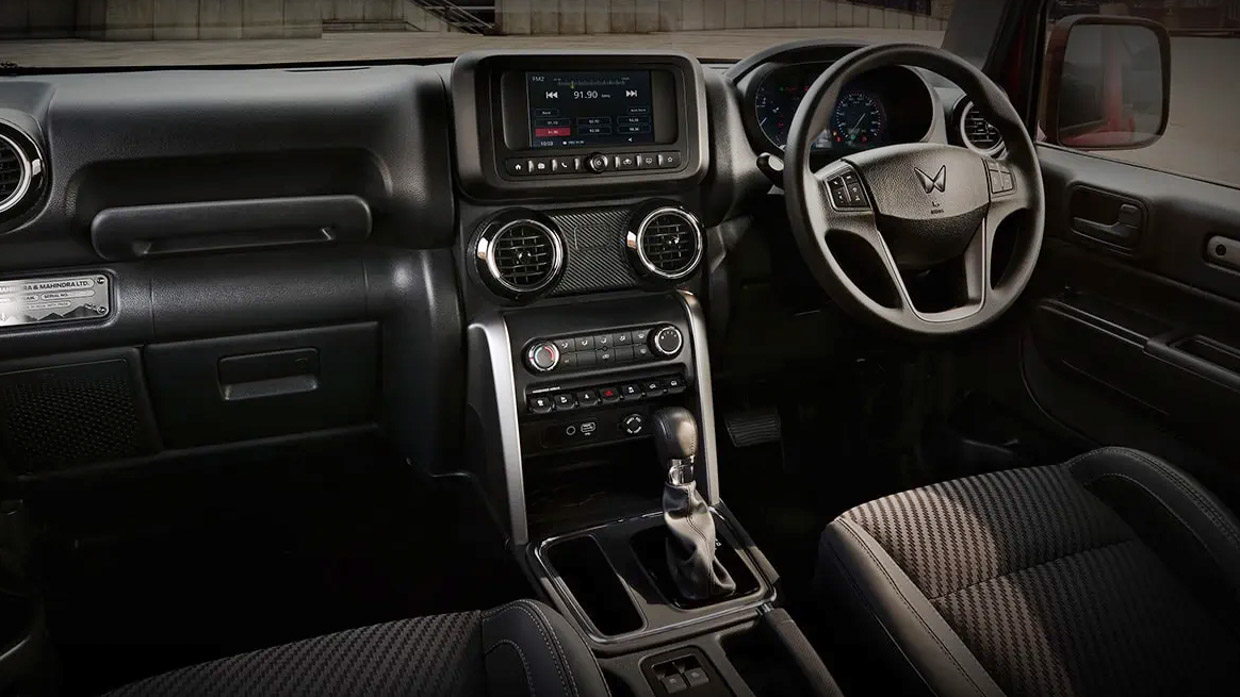
The centre console has two circular air vents, topped off with a 7.0-inch media touchscreen that has short-cut buttons and a volume knob beneath them, and below those are physical climate controls.
That said, I didn’t use any of these too much given we had other things to concentrate on during our short drive.
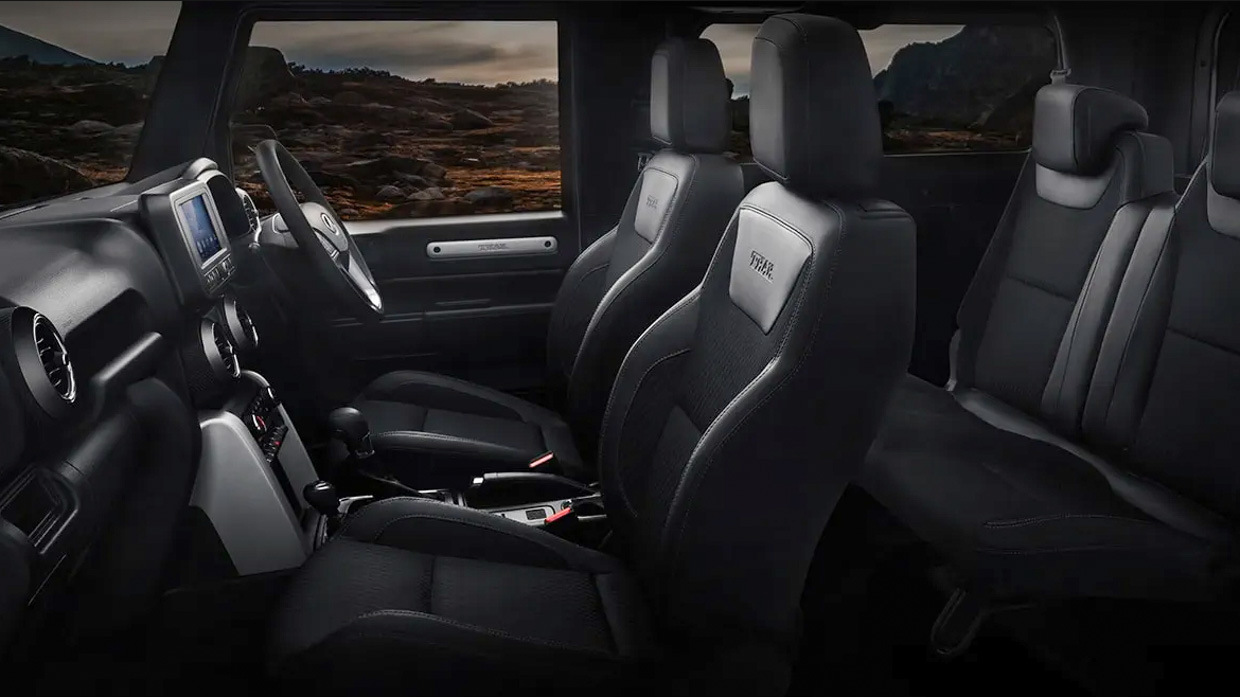
In terms of safety, the Thar achieved a four-star Global NCAP safety rating when it was crash-tested in 2020 and comes with dual front airbags, ABS and ESC as well as a built-in interior roll cage.
Again, nothing to scream home about in that regard. The spartan safety tech would no doubt have to be beefed up if there were ever any Australian homologation plans.
It was short but sweet. The clouds cleared, and the ‘Thar weather system’ had passed, at least for now. I’d had just a small taste of it and developed a hunger for more – how would the Thar actually drive on-road? Or in higher gears? What was it actually like to live with? I guess the only way to find out is to come back to India for another drive.
My brief stint at the helm suggests an endearing and capable vehicle that’s barrels of fun to beat around some highly challenging off-road tracks, at least on initial impression during my very short time with it.
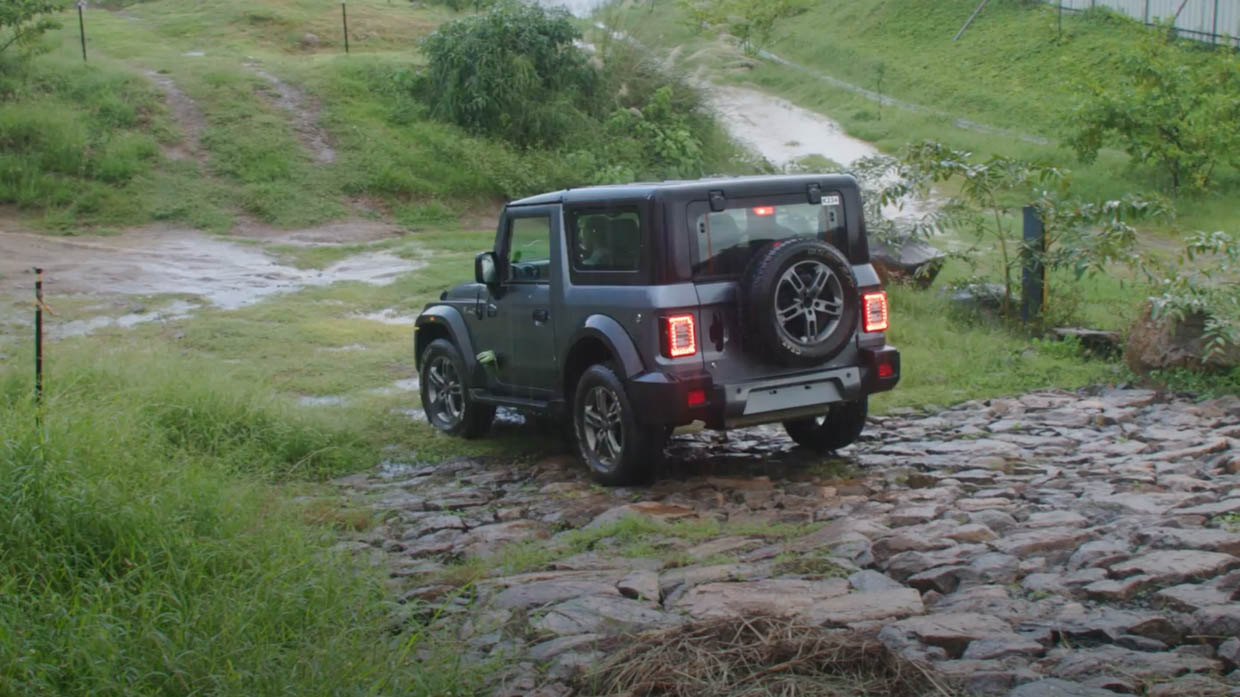
While it’s not the most technically advanced car, nor does it have the plushest interior, though that misses the point as to what the Thar is about. Ultimately when you compare what it offers against pricing it does seem like an incredible value proposition, at least in India. It’s easy to see why it is so popular within its home country.
The fact the vehicle is born out of treacherous Indian conditions and weather extremes – and is named after a desert – suggest some proper relevance to a country and a market such as Australia.
If it were to ever arrive in Australia, in whatever form, and maintain the same compelling pricing then the Thar would no doubt find a very solid niche occupied by the likes of the Mahindra Pik-Up and Suzuki Jimny back at home.
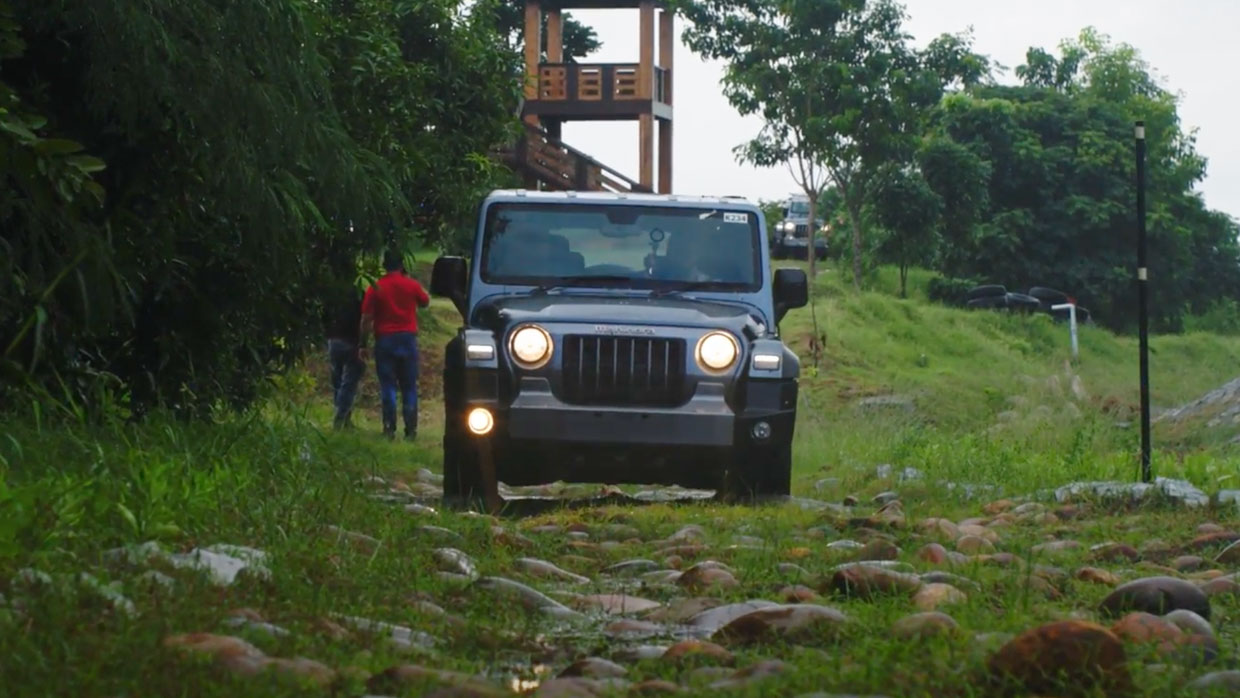
Its rugged image would also no doubt reap rewards for the Mahindra brand as it works to make itself a household name downunder.
And so, days later, as I write this review back home, I check the forecast for the weekend – 35 degrees on Saturday, the chance of thunderstorms, and heavy rain on Sunday – Thar-weather!
But sadly, I’ll be without my trusty companion this time round.
About Chasing cars
Chasing Cars reviews are 100% independent.
Because we are powered by Budget Direct Insurance, we don’t receive advertising or sales revenue from car manufacturers.
We’re truly independent – giving you Australia’s best car reviews.
The estimate provided does not take into account your personal circumstances but is intended to give a general indication of the cost of insurance, in order to obtain a complete quote, please visit www.budgetdirect.com.au. Estimate includes 15%^ online discount.
^Conditions Apply
Budget Direct Insurance arranged by Auto & General Services Pty Ltd ACN 003 617 909(AGS) AFSL 241 411, for and on behalf of the insurer, Auto & General Insurance Company Limited(ABN 42 111 586 353, AFSL 285 571).Because we don’t know your financial needs, we can’t advise you if this insurance will suit you. You should consider your needs and the Product Disclosure Statement before making a decision to buy insurance. Terms and conditions apply.
Indicative quote based on assumptions including postcode , 40 year old male with no offences, licence suspensions or claims in the last 5 years, a NCD Rating 1 and no younger drivers listed. White car, driven up to 10,000kms a year, unfinanced, with no modifications, factory options and/or non-standard accessories, private use only and garaged at night.
^Online Discounts Terms & Conditions
1. Discounts apply to the premium paid for a new Budget Direct Gold Comprehensive Car Insurance, Third Party Property Only or Third Party Property, Fire & Theft Insurance policy initiated online on or after 29 March 2017. Discounts do not apply to optional Roadside Assistance.
2. Discounts do not apply to any renewal offer of insurance.
3. Discounts only apply to the insurance portion of the premium. Discounts are applied before government charges, taxes, levies and fees, including instalment processing fees (as applicable). The full extent of discounts may therefore be impacted.
4. We reserve the right to change the offer without notice.